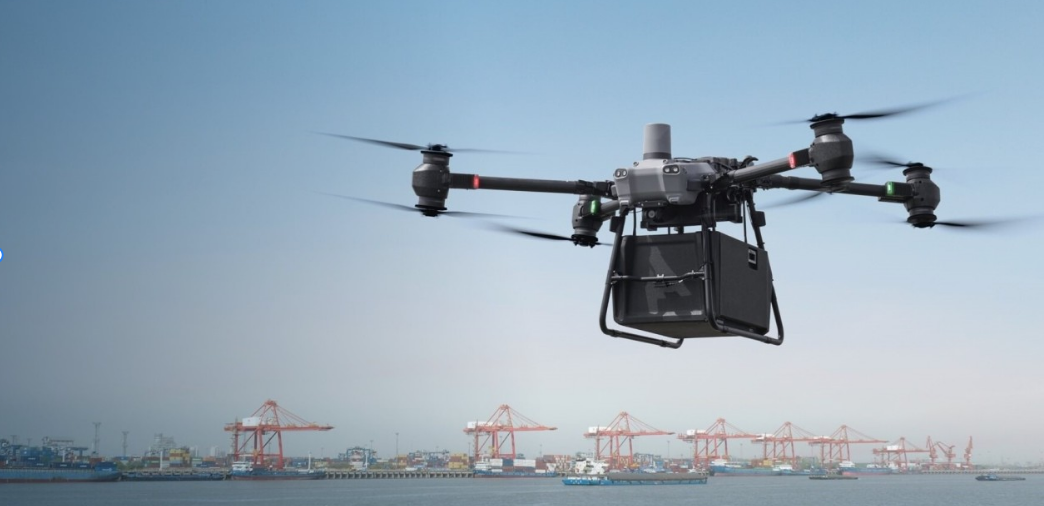
Canadian and US Technology Innovation Taking Off Over Rural Nova Scotia Islands
Aviation is between 121 and 172 years old, depending on who you ask. When we think of it, we typically imagine boarding a flight at an airport for a vacation or work trip to another city. But when it comes to modern technology like drones—the lesser-known and sometimes concerning younger sibling of aviation—we often hear phrases like "drones are new and emerging." In reality, drones have technically been around longer than the Wright Brothers' first flight in 1903. Simply put, an uncrewed flight is anything that flies without a human on board. The first “drone” was actually a hot-air balloon in 1783, which, although not considered a UAV by today’s standards, still meets the basic definition. The first image captured from a UAV was in the late 1800s, and by the start of WWII, the first modern drone was deployed to train British Air Force pilots. So, calling drones "new and emerging" isn’t entirely accurate.
For clarity, Canada uses "Remote" instead of "Unmanned," but RTM and UTM mean the same thing. Similarly, "drones," "UAVs," and Canada’s term "Remotely Piloted Aircraft System" (RPAS) are interchangeable.
Fast forward to today, and this not-so-new technology has evolved significantly, eclipsing traditional aviation as we know it. In 2023, North America typically saw around 44,000 to 50,000 crewed aircraft flights daily, including commercial, cargo, and private flights. In contrast, the number of registered drones in the U.S. alone exceeds 1.7 million, with about 500,000 registered for commercial use. In Canada, there are 6,000 to 7,000 crewed aircraft flights daily, and as of June 2024, Transport Canada reported 103,031 registered drones. The numbers are striking: Canada’s drone population outpaces traditional aircraft by 3:1, and when combined with the U.S., it’s a staggering 7:1. And this gap is only expected to widen.
The large drone population underscores the need for effective drone traffic management to ensure safe airspace operations as drone usage continues to grow. Air traffic control (ATC) and uncrewed traffic management (UTM) serve as the traffic lights and rules for the sky. Traditional ATC ensures that crewed aircraft flying at higher altitudes avoid collisions. It relies on radar, radio communication, and air traffic controllers—real people monitoring the skies and instructing pilots to keep them safe and adequately spaced. In contrast, UTM focuses on smaller drones flying much lower than regular aircraft. UTM relies more on automated technology to track multiple drones simultaneously, ensuring they don’t crash into each other or interfere with crewed aircraft. This system uses GPS and various other technologies to manage drones without significant human intervention.
While this is a simplified explanation, both systems aim to prevent crashes and keep airspace organized, but they approach it differently. As drones become more common, safely integrating these two systems is a significant challenge for everyone involved worldwide. This is where our Remote Traffic Management (RTM) team in Canada comes into play. Earlier this year, AeroVision Canada, its U.S. partner ANRA Technologies, and Canadian partner ClearSky Connect, were selected to participate in Canada’s 2nd RTM Trials Program. The first phase of RTM trials, completed in 2022, provided valuable insights to advance RTM in Canada and shape future RTM activities. This Phase 2 effort will further refine and evaluate the requirements for RTM services for future commercial operations in suburban environments.
AeroVision is the project lead and RPAS service provider conducting trial operations in the surrounding Halifax area with various use cases, including RPAS package delivery using RTM services. The initial trial location is the Mahone Bay area, focusing on flights from the mainland near Blandford to Big Tancook and Little Tancook Island.
Our flight program will involve scenario-based test flights for long-range mapping, power line inspections, cargo delivery, simulated search and rescue, and more. We plan to use a range of aircraft over the coming year, from small systems weighing 5 lbs to heavy-lift systems of nearly 250 lbs. Public education and acceptance are crucial to our program because expanding this rapidly growing industry would be challenging without them. We encourage area residents, businesses, and others to ask questions and participate in our public information events
For more on the launch of the trial, please check out:
Canada Advances Drone Traffic Management with Phase 2 Trials.
